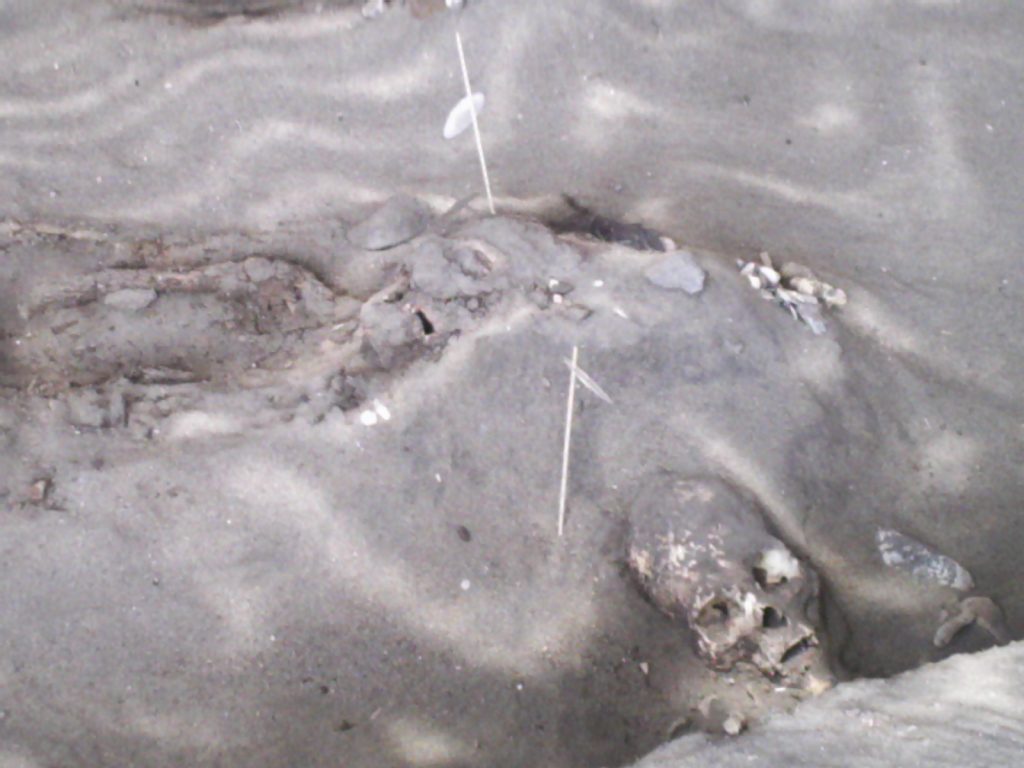When people hear the word mummy, most will think of the pharaohs found in tombs in Egypt. While they are the most well known, what many people may not realize is that the process of mummification has existed long before the Egyptians began doing it. Mummies, which scholars believe to be the oldest, even before recorded history, have been located in Chile, and are said to have belonged to an ancient people known as the Chinchorro.
What exactly is a mummy? A mummy is defined as “dead human or animal body [from ancient times] preserved by embalming or by unusual natural conditions.”1 Many of the areas in which mummies have been recovered all share one similar trait; each is known for extremely hot and dry weather. These climates cause the body to dry up and slow down the decomposition process.2

The oldest mummies belong to a people now referred to as the Chinchorro, who are believed to have lived between 8,000 BCE and 500 BCE. Evidence suggests that their practice of mummification predates Egyptian mummies by as many as two thousand years.3 The Chinchorro lived in the Atacama Desert, which is located in Southern Peru in Chile. They are believed to have been fisherman, living along the coast.4
Mummification was a complicated process. All organs, including the heart, eyes, and lungs were removed, followed by the skin. The body was then dried of fluids and stuffed with sticks, plant fibers, and straw. The body was disassembled by removing the bones and organs, and dried of all liquids. The body was then covered with black clay used to mold a new face, as the bones were put back into the body, along with sticks, clay, and plant fibers. A clay mask was made and placed over the skull, and the rest of the body was coated in Manganese paint, to give it a red color.5

Nearly two hundred Chinchorro mummies have been recovered from the Camarones River region. The earliest of these has been dated at 5050 BCE.6 The oldest mummies were children and small infants, suggesting that mummification was originally a practice carried out by grieving parents to remember their children. Upon further examination of the mummies, it is believed that high arsenic levels in the waters were the cause for high infant mortality rates among the Chinchorro.7
These mummies of Chinchorro today face great peril. Climate changes have caused the mummies to decay, along with many other treasures and artifacts. Microorganisms have grown from moisture in the air that are capable of decomposing skin. Researchers’ new goals are to find ways to preserve the ancient bodies of the Chinchorro people before it is too late.
- Columbia Electronic Encyclopedia, 6th Edition, April 2016, s.v. “Mummy.” ↵
- Salem Press Encyclopedia Of Science, January 2015, s.v. “Mummification,” by James L. Robinson. ↵
- Salem Press Encyclopedia Of Science, January 2015, s.v. “Mummification,” by James L. Robinson. ↵
- Salem Press Encyclopedia, January 2015, s.v. “Chinchorro Mummies,” by Michael W. Simpson. ↵
- Salem Press Encyclopedia Of Science, January 2015, s.v. “Mummification,” by James L. Robinson; Barbara Fraser, “Mysterious Mummies: An Anthropologist and a Geologist Team up to Solve the Puzzle of Chile’s Mummies,” Science World/Current Science Vol. 26 Issue 4 (2012): 8-11. ↵
- Salem Press Encyclopedia, January 2015, s.v. “Chinchorro Mummies,” by Michael W. Simpson. ↵
- Heather Pringle, “Arsenic and Old Mummies: Poison May Have Spurred First Mummies,” Science 324, no. 5931 (2009): 1130. ↵



63 comments
Oceane Roux
Great article! It is very interesting how an ancient civilization with a different culture and knowledge came up with this ritual. The author did an amazing job at explaining a process which seems pretty complicated. Also, I’m very surprised to learn that Egyptians weren’t the first people using mummification and I hope the researchers will be able to find a way to preserve them from the climate changes.
Cristian Medina-Lopez
I thought this article was filled with good information that has facts that most do not know about. One thing that I found interesting was how mummies were not just during the Egyptian times and was done way before that. I found it very interesting and it made me want to know more about the Chinchorro mummies and other civilizations that also mummified their dead.
Steven Clinton
Great article, when people think about mummies many instantly think Egyptian mummies. The Chinchorro mummies predate the Egyptian mummies by two thousand years.Mummification is obviously not just an Egyptian thing. The native people in pre-classical Chile discovered mummification. This topic is very particular, and so it’s obvious that you did your share of research. I like the overall tone of the article; the flow was smooth and straightforward.
Nahim Rancharan
What’s not to like about mummies? This was a very captivating and interesting article about the Chinchorro mummification process in Peru. Before reading this article, I knew that cultures, other than the Egyptians had practiced the art of mummification, but I never knew that this tedious process originally had it’s roots in South America. What makes this article even more interesting is the thought it brings about as to how word of this practice had managed to find its way to the other side of the world in places like Egypt, which I, no doubt, think had some influence from this indigenous culture. It was a very informative read. Good Job!
Marissa Gonzalez
I had no idea that the Egyptians were not the first ones to practice mummification. This article was a great and interesting topic because it informed me about the true mummification and not the stereotypical stories you hear about it. I found the process quite unusual because I cannot imagine who would be the people taking out the organs of the body. I feel that the Chinchorro’s are not very well known which is also why I was surprised that they practiced mummification before the Egyptians. This was a great article and it was very informative. Well done!
Johnanthony Hernandez
Interesting article, I had know that some of the oldest mummies had been found in Latin American, primarily in Peru and Chile, but I did not know that it was a completely different reason than those found in Egypt. While the Egyptians used it on their Pharaohs and members of the royal family, I did not know that the Chinchorro had begun the practice as a means to “remember” their children that had died. This makes me want to look further into the mummies that have been found in the region and to see what the different processes of mummification compared to the Egyptians, if there was much of a big difference or not.
Mario Sosa
Just like everyone else, I too had thought that mummification was only exclusive to Egypt. Indeed it is interesting how the Egyptians and the Chinchorro had different views of mummification. Egypt’s mummification process was mainly for rich people with the desire for their bodies to enter the afterlife while the Chinchorro people did it to only children, regardless of social status. This was an interesting read, good job!
Cameron Adelman
Cool article. Given how common it is for people to associate mummies with Egypt, I liked how you went out of your way to provide and objective definition of the word “mummy” and show that it transcends cultural boundaries. I actually think it would have been interesting to see more in this area, like a comparison and contrast between Peruvian and Egyptian mummies. Other then that, I enjoyed reading your article.
Cesar Zavala
Before reading this article, I was not aware of the extensive process of mummification. I previously thought that the deceased were just wrapped in a cloth from head to toe and then put in a tomb which was then buried deep underground, much like how one sees on television. Now that I know all of the work it took to prepare a mummy what the process was I am shocked that people could do such extreme things to deceased bodies in the hopes of preserving them. Great article, very well written!
Erick Martinez
Very interesting article with great information. A lot of information I had no prior knowledge of. You did a great job of explaining the mummification process, as well as its upbringing; from the Chinchorro people to the Egyptian. It was also great to learn why they did it, and to view the true reasoning behind the mummification of a body. Thank you for picking such a great topic and teaching me something new.